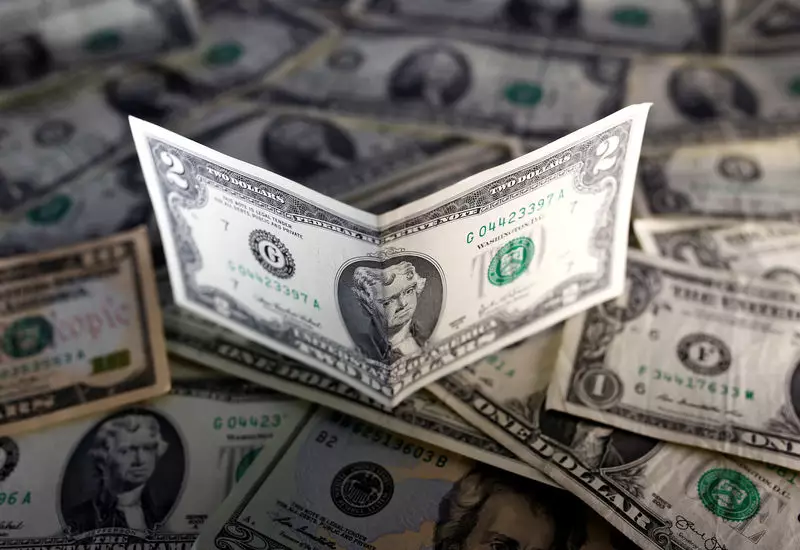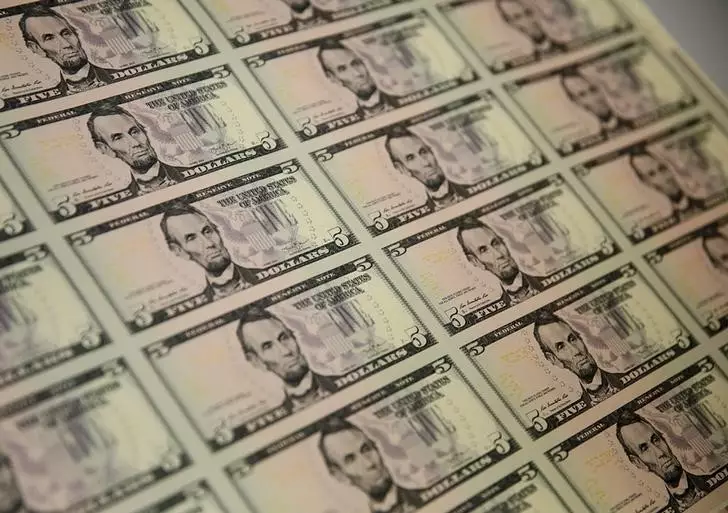Market Movements: U.S. Dollar Weakness and the Rise of Sterling

The U.S. dollar experienced a slight uptick on Friday, amidst considerable volatility following the Federal Reserve’s recent significant interest rate cut. This backdrop sets the stage for a broader examination of the dollar’s challenges, as it struggles to maintain momentum against a variety of competing currencies. As of 04:00 ET (09:00 GMT), the Dollar Index, which reflects the dollar’s value against a selection of six major currencies, managed a 0.2% gain, reaching 100.480. However, this figure still hovers just above a troubling 12-month low, highlighting the dollar’s ongoing vulnerability.
Analysts suggest that the primary catalyst for this dollar weakness stems from the Federal Reserve’s recent decision to initiate a rate-cutting cycle. With an aggressive cut of 50 basis points, interest rates now rest within the range of 4.75% to 5%. Markets are rife with speculation, indicating a 40% likelihood of an additional cut of the same magnitude in November, with expectations that the rates could settle around 2.85% by the close of 2025. This significant outlook reflects a shift in what the Fed considers neutral territory for interest rates.
Amidst these developments, market analysts have expressed caution, noting that the current dollar movements raise critical questions about its future trajectory. There is speculation surrounding the potential for the dollar to break out of a two-year trading range, with some market participants suggesting that existing support levels around 99.50 to 100 could be tested. Analysts at ING have indicated a strong inclination towards selling should these thresholds fail to hold.
The atmosphere of uncertainty surrounding the dollar stems not only from Fed policy but also from a broader economic context, wherein retail sales data and other indicators shape perceptions of economic health. Without clear triggers for a sustained rally, the dollar may remain trapped in a precarious position, subject to the whims of market sentiment and data releases.
The Sterling Surge: A Bright Spot Amidst Gloom
In stark contrast, the British pound has showcased resilience, fueled in part by compelling retail sales data emerging from the UK. On Friday, GBP/USD recorded a 0.2% increase, reaching 1.3312, with the pound achieving over a 1% rise throughout the week, marking its highest levels since March 2022. Such upward movement followed data revealing a more robust-than-expected retail sales increase of 1% in August. Moreover, July’s figures were revised positively, suggesting a strengthening consumer sector that boosts the pound’s overall outlook.
Compounding this positive sentiment, the Bank of England recently maintained its key interest rate at 5%, after previously hinting at a shift with a modest 25 basis point reduction in August. The juxtaposition of the BOE’s stability amidst the dollar’s volatility reflects a broader narrative of cautious optimism for the UK economy, positioning the pound as a relative safe haven.
Meanwhile, the European landscape painted a mixed picture for the euro. EUR/USD rose 0.1% to reach 1.1163, reflecting a nearly 1% gain throughout the week. Notably, this movement positions the euro close to its August peak, as traders weigh implications from the European Central Bank’s recent decisions. The ECB’s second rate cut of the year, paired with uncertainty over future monetary policy, indicates a climate of caution across the eurozone.
Additionally, German producer prices demonstrated signs of resilience, decreasing by only 0.8% year-on-year in August—less than the anticipated reduction—suggesting underlying economic stability. These developments contribute to the complexity of the euro’s performance, as the currency navigates pressure from both internal and external factors.
The Japanese Yen: Inflationary Pressures and Stability
Finally, the Japanese yen’s performance has been noticeably affected by the Bank of Japan’s decision to keep interest rates steady. USD/JPY rose 0.7% to 143.62, despite a prevailing sentiment of weakness. This decision correlates with rising inflation reaching a 10-month high in August, driven by wage increases and strengthening private consumption. Although the yen showed signs of strain, its proximity to previously established highs for 2024 suggests resilience amidst broader economic pressures.
The current landscape presents a dynamic interplay of currencies reacting to central bank policies, economic data releases, and forecasted market movements. While the U.S. dollar grapples with a challenging economic environment, the pound exhibits strength buoyed by robust consumer data, and the euro and yen reflect unique regional challenges as the global economy continues to evolve.





